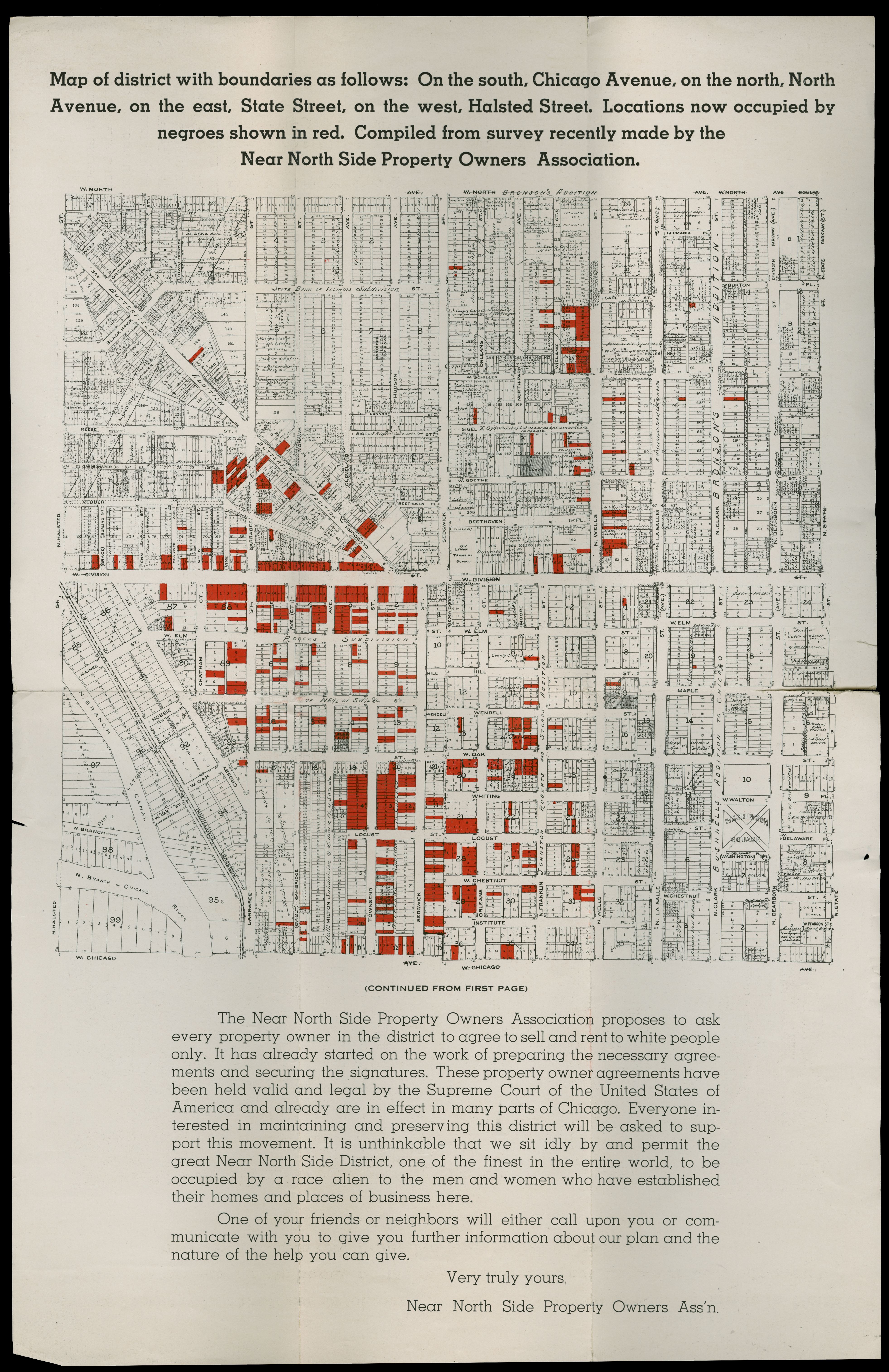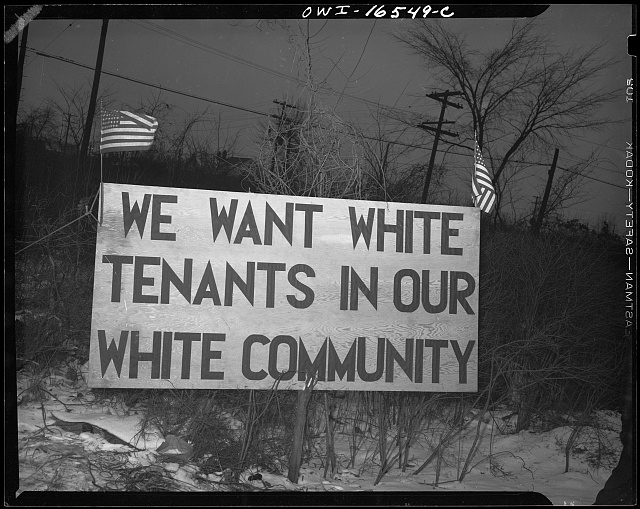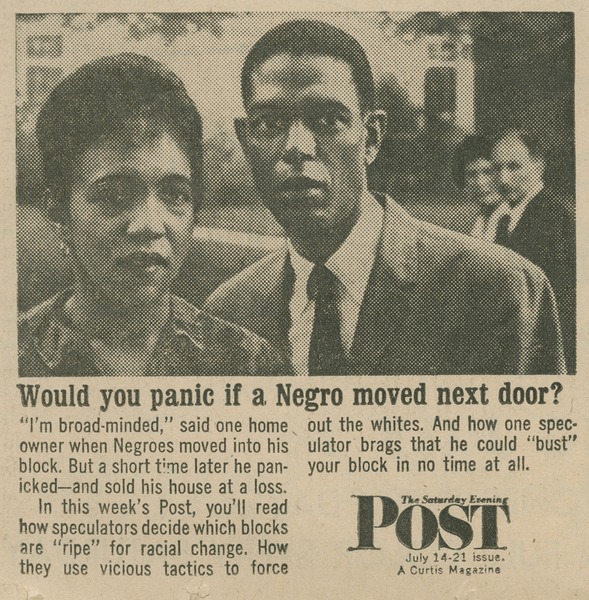
Restrictive covenants on Chicago's South Side in 1947 (The Encyclopedia of Chicago)
Restrictive Covenants
(My Modern Met)
“The restrictive covenant, during a period of intense immigration and in-migration, permitted a private detour around the prohibition of segregation.” (Moser 2014)
Restrictive covenants maintained residential segregation after racial zoning laws were outlawed by legally preventing white residents from selling to Black buyers. This impeded desegregation and maintained property values. After the Chicago Real Estate Board’s drafting of a standard covenant in 1927, they soon covered a majority of the land in Chicago.

Restrictive covenants on Chicago's South Side in 1947 (The Encyclopedia of Chicago)

Black occupation on the Near North Side in the early 20th century (Newberry Digital Exhibitions)
Although many factors limited Blacks’ opportunities to move out of the Black Belt, including poor job opportunities, racial violence and opposition to integration, the early private enforcement of restrictive covenants on the institutional and individual level was critical to preventing desegregation.
“The Job Ceiling subordinates Negroes but does not segregate them. Restrictive covenants do both. They confine Negroes to the Black Belt, and they limit the Black Belt to the most rundown areas of the city.” (Cayton 1945)

(Siegel 1970)
“‘At present Negroes are confined to restricted areas with bad houses and exorbitant rents. They are confined to these districts by an atmosphere of prejudice, and specifically by conspiracies known as restrictive covenants.’” (Plotkin 1998 48).

“The Struggle for Civil Rights in the Urban North” (The Newberry Library)
Restrictive covenants initially appeared effective at preventing integration. However, with deteriorating conditions and intensified overcrowding, overflow into neighboring white communities was inevitable. This raised questions about restrictive covenants’ long-term effectiveness.
“Even as whites adopted covenants, African Americans contested them. Squeezed by high densities in the Black Belt, blacks pushed beyond the boundaries into adjacent white neighborhoods. Neighborhood organizations affected by the Depression economy often lacked the legal resources to enforce agreements adopted in the flush of 1920s prosperity. Thus, in Chicago neighborhoods such as Oakland, racial integration occurred despite the covenants.” (Plotkin 1998, 42)
The importance of racially restrictive covenants in maintaining residential segregation is uncertain. While restrictive covenants covered many white neighborhoods, their enforcement remains unclear, as many white homeowners were incentivized to sell to Black buyers. However, crucial to residential segregation or not, these covenants acted as a powerful symbol to homeowners that white communities opposed desegregation. In the search for better housing, many individuals and organizations sought to break the barrier of racially restrictive covenants.